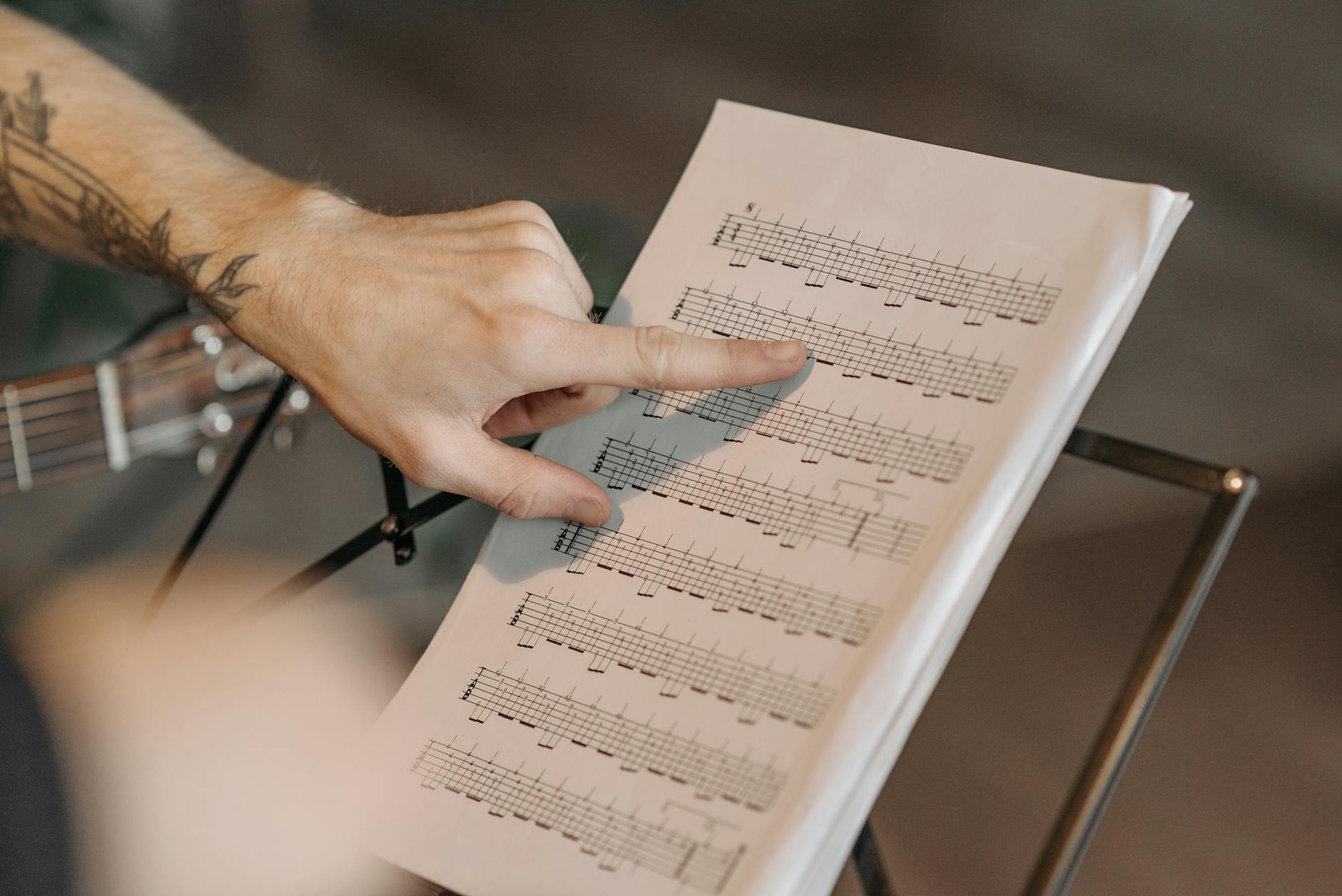Table of Contents
- Introduction
- Understanding Proper Notation
- Common Mistakes While Playing Guitar
- Benefits of Mastering Guitar Notation
- Practical Tips for Mastering Notation
- Unlock Your Musical Potential
- Frequently Asked Questions
Introduction
Playing guitar is a beautiful journey filled with creativity, expression, and exploration. However, many aspiring musicians unknowingly fall into traps that can hinder their growth and limit their potential. Without a solid understanding of proper guitar notation, players might find themselves repeating mistakes and becoming frustrated with their progress. This blog aims to illuminate key aspects of guitar notation and provide you with essential knowledge to elevate your playing.
In essence, understanding guitar notation isn’t just a technical skill; it’s a crucial part of developing a musical mindset. By grasping the fundamentals of how music is written and structured, you’ll not only become a better guitarist but also a more confident performer and composer. So, let’s break down the essential components of proper notation and help you enhance your playing skills.
Understanding Proper Notation
At its core, proper notation serves as a universal language that musicians utilize to communicate musical ideas effectively. Familiarizing yourself with various forms of notation—like tablature, standard notation, and chord charts—opens up a wealth of possibilities for your guitar playing. Each type has its own strengths and can be used in different contexts, allowing you to navigate the musical landscape with greater ease.
Moreover, understanding the fundamentals of rhythm, scales, and key signatures is essential for interpreting these notations correctly. Without this knowledge, playing becomes a chore rather than an enjoyable experience. Thus, diving into the world of notation can make your practice sessions significantly more fulfilling and varied. Ultimately, this understanding allows you to play with intention and precision, elevating your overall musicality.
Common Mistakes While Playing Guitar
Many players, especially those new to the instrument, often overlook the importance of using proper notation. Ignoring this foundational aspect can lead to incorrect finger placements, muddled rhythms, and a lack of overall clarity in performance. One prevalent mistake involves attempting to learn songs solely by ear, which can be a useful skill but often leads to misunderstandings of the song’s structure and timing.
Additionally, neglecting to revisit and understand the basics of music theory is another pitfall. Not knowing how scales and chords work together can create a disconnect that hampers your ability to improvise or create your own music. Emphasizing proper notation takes the guessing game out of playing and gives you the structure to explore new musical avenues confidently.
Benefits of Mastering Guitar Notation
When you focus on mastering proper notation, a multitude of benefits unravels. For starters, you’ll experience enhanced communication with other musicians, whether jamming with friends or participating in ensemble settings. Instead of fumbling through parts, you gain the ability to visualize and interpret music seamlessly, which is invaluable during collaborative sessions.
Additionally, this proficiency invites musical freedom. Knowing how to read notation allows you to learn new songs quickly and accurately because you grasp the underlying structure of the music. This skill not only enriches your guitar playing but also nurtures a deeper connection to songs as you uncover their building blocks. Ultimately, mastering notation helps you break free from limitations and truly embrace the art of musicianship.
Practical Tips for Mastering Notation
Getting started with guitar notation doesn’t have to be overwhelming. Begin by regularly practicing reading and interpreting different forms of music notation. Use online resources, tutorials, and apps designed to train your reading skills. Gradually incorporating these tools into your daily practice routine will help solidify your understanding over time.
Moreover, consider studying popular songs and their respective notations to understand how different elements come together. Break down complex pieces into manageable sections, dissecting how chords integrate with melodies. This will not only enhance your ability to read music but also deepen your comprehension of the song’s nuances. In the long run, consistent practice and dedicated exploration will yield remarkable improvements in your musical endeavors.
Unlock Your Musical Potential
It’s time to take the leap and embrace proper guitar notation. As you shift your perspective and invest effort into mastering this invaluable skill, you’ll begin to unlock newfound potential within yourself. Picture the thrill of playing your favorite songs flawlessly or jamming effortlessly with fellow musicians. This isn’t merely wishful thinking; it’s entirely achievable with dedication and a commitment to learning.
As you cultivate this understanding, you’ll notice how quickly your confidence builds. The anxiety of feeling lost or uncertain in musical situations fades, allowing you to fully express yourself and explore your artistry. When you understand guitar notation, each strum and note becomes a part of a larger dialogue, enriching your journey as a guitarist.
Frequently Asked Questions
- Why is proper guitar notation important? Proper notation helps you develop essential music-reading skills, understand song structures, and communicate effectively with other musicians.
- Can I learn guitar without knowing notation? While it’s possible, knowing notation enriches your playing experience, enabling you to play more confidently and accurately.
- How can I improve my notation skills? Regular practice, analyzing your favorite songs, and using educational resources can significantly enhance your music-reading abilities.
- What resources are available for learning notation? There are numerous online courses, apps, and websites dedicated to teaching music notation specifically tailored for guitar players.
Image Credit: Pexels
